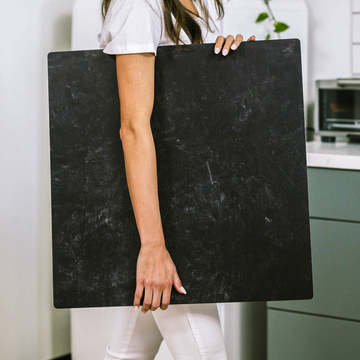You've perfected your lighting. You've styled the perfect garnish. Your camera settings are dialed in. But if your food photos still feel flat, there's one overlooked element that could be holding you back: your surface.
That's right - the table, slab, or board beneath your dish isn't just background noise. It's a silent co-star that can make your food look rustic or refined, homey or haute cuisine. Let's explore how to choose surfaces that elevate rather than undermine your food photography.
The Science Behind Surface Selection
Every material interacts with light differently, creating distinct moods:
- Glossy surfaces (marble, acrylic) create dramatic reflections perfect for decadent desserts
- Matte textures (wood, concrete) absorb light for soft, organic feels
- Rough finishes (weathered wood, stone) add tactile contrast to smooth foods
Pro Tip:
Keep a polarizing filter handy when shooting glossy surfaces to control unwanted glare. The difference can be night and day.
Psychology of Materials
Surfaces speak to viewers on a subconscious level:
- Wood whispers "homemade" and "comfort"
- Marble shouts "luxury" and "precision"
- Concrete says "urban" and "modern"
In one fascinating study, participants rated identical chocolate as more indulgent when photographed on wood versus marble. That's the power of surface psychology!
Practical Surface Selection
Follow this simple framework for foolproof choices:
- Match delicate foods (like panna cotta) with hard surfaces
- Pair textured foods (artisan bread) with smooth backdrops
- Use warm-toned woods to enhance golden baked goods
Remember: your surface should complement, not compete with, your culinary subject.
Future-Forward Surfaces
While traditional materials still dominate, exciting innovations are coming:
- Switchable e-ink backdrops that transform at the touch of a button
- Smart surfaces with built-in lighting effects
- AI-generated textures tailored to specific dishes
The future of food photography surfaces looks brighter (and more versatile) than ever.
Your Next Steps
Ready to put this into practice? Try this:
- Audit your current surface collection
- Identify one gap in your material options
- Experiment with a new surface this week
The right surface might just be the missing ingredient in your food photography recipe for success.



